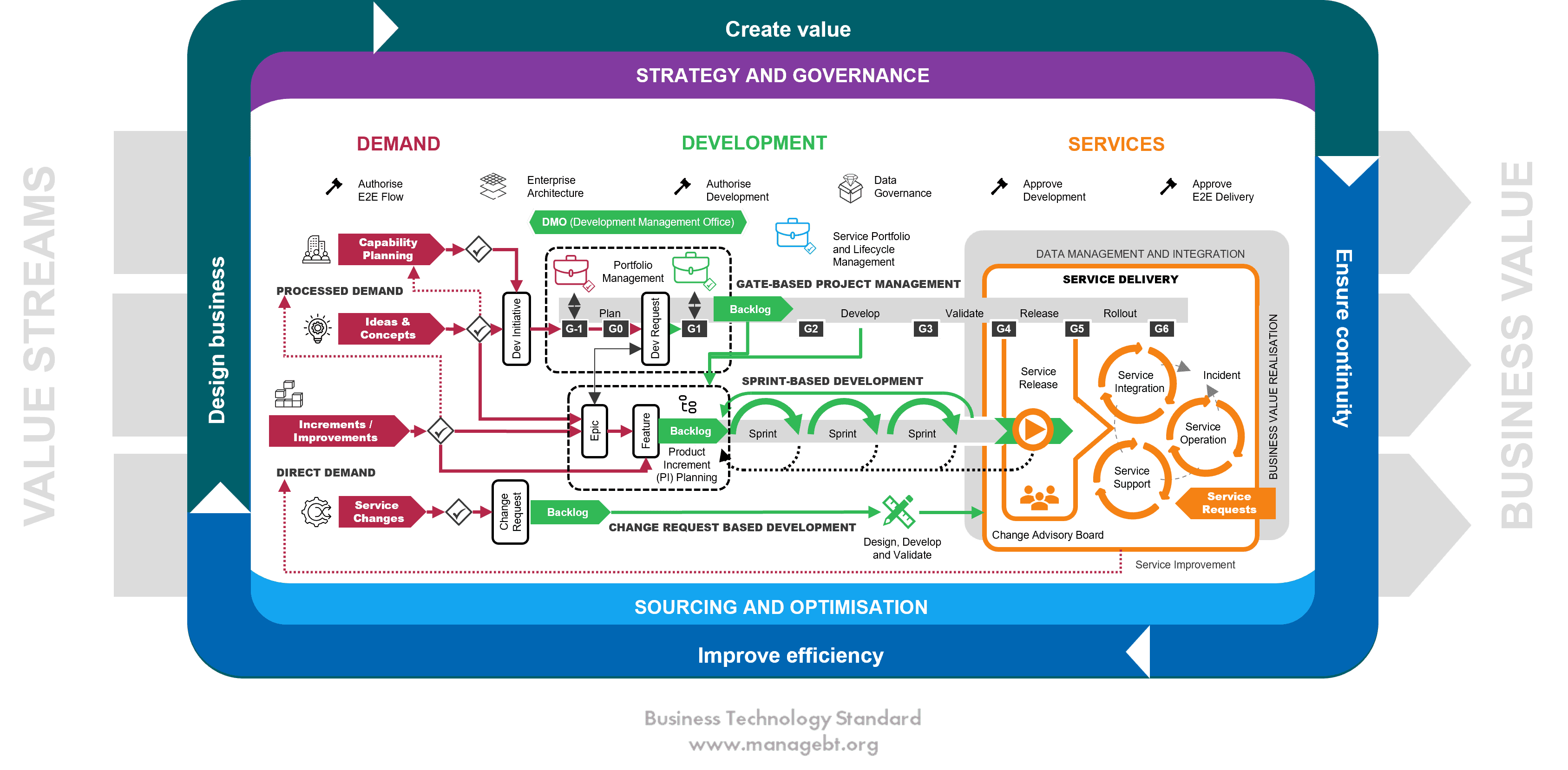Services discipline makes the tested and validated development outcomes accessible to users via a service release. Services discipline ensures the operational readiness with the service delivery ecosystem and validates that user support and services are in place with required skills and capacity.
Figure 6.0.1 Services discipline
From the business perspective the services discipline has three major objectives:
Global megatrends such as cloudification, globalisation and individualisation have an impact on the services requiring them to become centrally managed. In the early stage this was done by consolidating the services with sourcing deals and later by using global cloud service providers. Digitalisation in its current scale-up phase also increases the diversity. Many innovative products and solutions are created by smaller companies able to provide agile and unique service. This sets a challenge to the services discipline as the service consumers expect simple, intuitive and unified support processes.
Figure 6.0.2 Global megatrends impact the services
Business technology service consumers are served with impression and touchpoints to have access to processes, applications and data which encompasses the underlying platforms, integrations and infrastructure. If any of these components fails, the whole service is failing. Therefore, the management of the service is essential even if the service consumers usually perceive only the concrete results of the services.
To be productive within the organisation and successful in digital business, it is crucial to assure an integrated and harmonised service experience regardless of what are the underpinning elements or who are the actual service providers. At the same time, there is need for agile and responsive solution and service development.
Figure 6.0.3 Business Technology service
The core elements of service management consist of activities focusing on management, release and delivery of the services.
Management of the services:
Delivery of the services:
Business Technology Standard provides a pragmatic and business focused reference model that enables the adoption of development practices. The standard is flexible to evolve with the organisations of all maturity levels and can integrate practices such as ITIL, SIAM and DevOps. Some examples of service management practices are the following:
